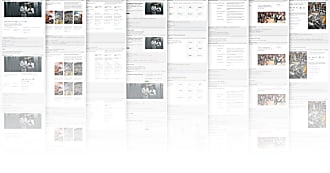Canonical
on 11 April 2013
An interview with Marcus Haslam, head of brand and visual design at Canonical.
It takes huge backroom effort to craft an OS that is fluid and easy to use, yet also works equally well on diverse devices, from TV to tablet, smartphone to PC. While other interfaces have grown piecemeal to fit onto a limited set of devices, Ubuntu was designed from the outset to offer the same intuitive experience on all screens.
The design vision for Ubuntu on phones and tablets is based on three core principles, the most fundamental one being focus on content. This allows both the developer and the consumer more room for creativity. “Ubuntu’s gestural interface gives the content or task at hand the full attention. Everything else is peripheral yet readily available around the edges of the screen”, explains Marcus Haslam, head of brand and visual design at Canonical.
The second key design principle is about fast and natural interactions without the necessity of having hard/soft keys or home buttons. On Ubuntu based smartphones and tablets, interactions are based on gestures and the edges of the screen. “A great example of the interface’s natural rhythm is what we call “edge magic”, which lets you flick easily and quickly between apps, without having to always go back to the home screen,” says Marcus.
Ubuntu has been designed carefully, intricately, but without adding complexity. “We drew parallels with Japanese’s design culture – such as origami and architecture – when creating Ubuntu’s sophisticated style; a considered, clear and clean style,” says Marcus. “Every layout, shape, use of typography and shadow is carefully chosen and deliberately placed.”
The design vision around Ubuntu also perfectly reflects the four brand values of collaboration, freedom, precision and reliability. “These brand values guide all our work. Being open source, Ubuntu is all about collaboration and the community of well over 20 million users and counting,” says Marcus. “Freedom is about how Ubuntu lets you simply dive in and intuitively do what you want – without restrictions. Precision defines our exact, meticulous and considered design work and the attention to detail behind Ubuntu, while reliability describes the platform’s extreme stability and security because it’s built on Linux.”
The success of the design approach was highlighted by Gadget Review recently: “Ubuntu is a brand new tablet and smartphone OS — not a knock-off, re-engineered OS. As enthusiasts and developers have seen before, there’s a certain finesse when it comes to developing an original OS — and Ubuntu Touch nailed the interface design, bringing something truly unique to the market.”
If you would like to learn more about our design guidelines, building blocks, and global patterns, please go to http://design.ubuntu.com/apps. “We have a solid foundation to move forward and aim to build a lasting impact on the way people use devices,” concludes Marcus.



